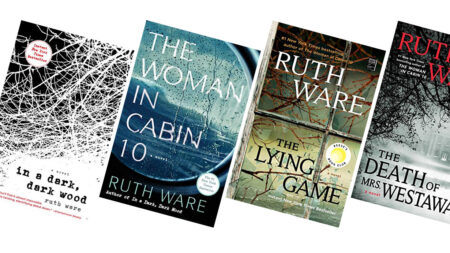Beverly Cleary Books in Order (the Henry Huggins Reading Order and more)
Beverly Cleary (1916-2021) was an award-winning American writer of children’s and young adult fiction. In fact, she was one of America’s most successful authors, selling more than 90 million copies of her books worldwide during her long career–that began in 1950 after working as a librarian for a decade. It was during her time as a librarian that she realized that kids deserve books of literary quality. When she first started writing, Beverly took inspiration from the times she composed stories for children during Saturday afternoon story hours when she worked for the library in Yakima.
She later wrote about people living ordinary lives, some of her characters are based on her own childhood experiences, the kids in her neighborhood growing up, as well as children she met while working as a librarian. During her almost 50-year career, Beverly Cleary created popular characters such as Ramona Quimby and Beezus Quimby, Henry Huggins and his dog Ribsy, and Ralph S. Her work influenced more than one generation of writers and was enjoyed by millions of children.
How to read Beverly Cleary’s Books in Order?
Reading The Henry Huggins Series in Order
- Henry Huggins (1950) – Just as Henry Huggins is complaining that nothing exciting ever happens, a friendly dog sits down beside him and looks pleadingly at his ice-cream cone. From that moment on, the two are inseparable. But when Ribsy’s original owner appears, trying to reclaim his dog, Henry’s faced with the possibility of losing his new best friend. Has Klickitat Street seen the last of rambunctious Ribsy?
- Henry and Beezus (1952) – Well-meaning Henry Huggins would do anything to get the bike of his dreams. But every idea he has keeps falling flat. Selling bubble gum on the playground gets him in trouble with his teacher. There’s the paper route, but Henry’s dog Ribsy nearly ruins that with his nose for mischief.
- Henry and Ribsy (1954) – From the first moment Henry found Ribsy, the curious mutt was poking his nose into things he shouldn’t be. Whether terrorizing the garbage man, chasing cats, or gobbling Ramona Quimby’s ice-cream cone, Henry’s four-legged pal has walked himself into one problem too many.
- Henry and the Paper Route (1957) – All the older kids work their own paper route, but because Henry is not eleven yet, Mr. Capper won’t let him. Desperate to change his mind, Henry tries everything he can think of to show he’s mature and responsible enough for the job. From offering free kittens to new subscribers, to hauling hundreds of pounds of old newspapers for his school’s paper drive, there’s nothing Henry won’t try.
- Henry and the Clubhouse (1962) – Henry and his friends are building a no-girls-allowed clubhouse. With a private space of their own and a top-secret password required for entry, the boys are relieved to finally have a hang-out spot they don’t have to share.
- Ribsy (1964) – Good ol’ Ribsy’s ever-curious mind has always gotten him into trouble, but this time he may have gone too far. After a comical turn of events, Ribsy finds himself in the wrong station wagon with the wrong children.
After that, Henry appeared only rarely in the Ramona series, as a supporting character. His last appearance was in Ramona and Her Father.
Reading The Ramona Quimby Series in Order
In the Henry Huggins books, Beatrice, known as Beezus, was one of Henry’s friends, and her younger sister Ramona was generally a pest to Henry, Beezus, and the other children. But now, she’s the star of her own series that takes place in the same neighborhood, obviously. For more details about the plot of the books, you can read our article dedicated to the Ramona Quimby series.
- Beezus and Ramona (1955)
- Ramona the Pest (1968)
- Ramona the Brave (1975)
- Ramona and Her Father (1977)
- Ramona and Her Mother (1979)
- Ramona Quimby, Age 8 (1981)
- Ramona Forever (1984)
- Ramona’s World (1999)
Bonus. Just for Me: My Ramona Quimby Journal – This fun and interactive Ramona Quimby Journal is just for kids who, like Ramona herself, feel as if they have to share everything without ever getting to enjoy something that is only theirs alone.
Reading The Ellen & Otis Series in Order
- Ellen Tebbits (1951) – Ellen Tebbits has an embarrassing secret that she’ll never share with anyone. That is, until she meets Austine-and discovers that Austine has the exact same secret! Soon the girls are best friends who do everything together-attending dance class, riding horses, and dodging pesky Otis Spofford, the neighborhood troublemaker. But then Ellen does something terrible . . . and now Austine isn’t speaking to her. Ellen desperately wants her best friend back. How can she show Austine how sorry she is?
- Otis Spofford (1953) – When it comes to stirring up a little excitement in class, Otis Spofford knows just what to do. He can turn a folk dance fiesta into a three-ring circus . . . or an arithmetic lesson into a spitball marathon. Best of all, Otis likes teasing neat, well-behaved Ellen Tebbits–until the day his teasing goes too far. Now Otis is nervous, because Ellen isn’t just mad . . . she’s planning something!
Reading The First Love Series in Order
A series about the joys and worries of a young girl’s first crush.
For more information about the books in the First Love series by Beverly Cleary, you’ll find below the official synopsis for all the books:
- Fifteen (1956) – It seems too good to be true. The most popular boy in school has asked Jane out-and she’s never even dated before. Stan is tall and good-looking, friendly and hard-working-everything Jane ever dreamed of. But is she ready for this? Suppose her parents won’t let her go? What if she’s nervous and makes a fool of herself? Maybe he’ll think she’s too young. If only she knew all the clever things to say. If only she were prettier. If only she were ready for this…
- The Luckiest Girl (1975) – Sixteen-year-old Shelley Latham longs for her junior year of high school to be different from the stifling sameness of the years before. When she is sent from Oregon to California to stay with friends of the family for the school year, she gets her wish. Right away, Shelley’s pretty looks and “Northern” ways endear her to her new classmates, including Hartley, the student body president. Meanwhile, Shelley sets her heart on star basketball player Philip-and when he asks her out, everything seems perfect. Shelley truly is the luckiest girl…but is it Philip or Hartley whom she really loves?
- Jean and Johnny (1959) – Fifteen-year-old Jean is astonished when handsome Johnny whirls her around the dance floor. She’s never given much thought to boys before; now Johnny is all that’s on her mind. Finally, she finds the courage to invite him to a dance. But the excitement of a new dress and a scheme to take Johnny’s photograph cannot stop Jean’s growing uneasiness that she likes Johnny a lot more than he likes her . . .
- Sister of the Bride (1963) – Barbara can hardly believe her older sister is getting married. With all the excitement of wedding plans going on, Barbara can’t help dreaming of the day she will be the bride. She can’t wait to fall in love. But as the big day gets closer, wedding planning often turns into family arguments. Even the bride and groom are bickering over details, and Barbara’s fun-loving sister is turning into a very practical, grown-up person.
Reading The Ralph S. Mouse Series in Order
An imaginative adventure about a young mouse named Ralph who is thrown into a world of excitement when a boy and his shiny toy motorcycle check in to the Mountain View Inn.
- The Mouse and the Motor Cycle (1965) – When the ever-curious Ralph spots Keith’s red toy motorcycle, he vows to ride it. So when Keith leaves the bike unattended in his room one day, Ralph makes his move. But with all this freedom (and speed!) come a lot of obstacles. Whether dodging a rowdy terrier or keeping his nosy cousins away from his new wheels, Ralph has a lot going on! And with a pal like Keith always looking out for him, there’s nothing this little mouse can’t handle.
- Runaway Ralph (1970) – With a motorcycle to rev and the open road to see, Ralph S. Mouse is itching to run away from his overprotective family! But once he escapes to a summer campground nearby, the horrors of the wild make him doubt his plan. Angry cats, scary watchdogs, and grouchy gophers are only the half of it…
- Ralph S. Mouse (1982) – With his rowdy cousins constantly wearing out his motorcycle and the Mountain View Inn manager threatening to take care of the mouse infestation once and for all, Ralph decides it’s time to get away for a while. He convinces his human friend Ryan to take him along to school, where Ralph instantly becomes the center of attention.
Reading The Leigh Botts Series in Order
An exploration of topics like divorce, insecurity, and bullying through the thoughts and emotions of a sixth-grade boy as he writes to his favorite author, Boyd Henshaw.
- Dear Mr. Henshaw (1983) – After his parents separate, Leigh Botts moves to a new town with his mother. Struggling to make friends and deal with his anger toward his absent father, Leigh loses himself in a class assignment in which he must write to his favorite author. When Mr. Henshaw responds, the two form an unexpected friendship that will change Leigh’s life forever.
- Strider (1991) – Can a stray dog change the life of a teenage boy? It looks as if Strider can. He’s a dog that loves to run; because of Strider, Leigh Botts finds himself running-well enough to join the school track team. Strider changes Leigh on the inside, too, as he finally begins to accept his parents’ divorce and gets to know a redheaded girl he’s been admiring.
The Twins Series
The stories of the twins, Jimmy and Janet.
- The Real Hole (1960) – Father comes to the rescue when the twins can’t agree about what to do with the big hole in the backyard.
- Two Dog Biscuits (1961) – When a neighbor gives Janet and Jimmy two dog biscuits, the four-year-old twins set out on a walk with their mother, but none of the dogs they meet are nice enough to receive a biscuit as a gift.
- The Growing-Up Feet (1967) – Four-year-old twins Jimmy and Janet can’t wait to grow up. So when they go off to get new shoes, they buy bright red boots that will s-t-r-e-t-c-h and grow along with them.
- Janet’s Thingamajigs (1987) – Each day Janet carefully chooses three little thingamajigs. And each day she neatly wraps them in a paper bag and puts them in her crib — safe from her brother Jimmy’s meddling hands. But when the bags fill Janet’s crib, Mother is at her wit’s end until she saves the day by giving the twins a big surprise that makes Janet’s paper-bag collection a thingamajig of the past.
The Other Books written by Beverly Cleary
- The Hullabaloo ABC (1960) – Beverly Cleary’s ABC book allows preschoolers to have their very first introduction to the charm and pleasure of the beloved author’s words. And Ted Rand’s warm paintings evoke the energy and spirit of life on a farm.
- Leave It To Beaver (1960), Beaver and Wally (1961) & Here’s Beaver! (1961) – Books based on the classic television program Leave It to Beaver, created by Joe Connelly and Bob Mosher.
- Emily’s Runaway Imagination (1961) – Spunky Emily Bartlett lives in an old farmhouse in Pitchfork, Oregon at a time when automobiles are brand-new inventions and libraries are a luxury few small towns can afford. Her runaway imagination leads her to bleach a horse, hold a very scary sleepover, and feed the hogs an unusual treat. But can she use her lively mind to help bring a library to Pitchfork?
- Mitch and Amy (1967) – Mitch and Amy both think being twins is fun, but that doesn’t stop them from squabbling. Amy is good at reading. Mitch is a math whiz. Amy likes to play pretend. Mitch would rather skateboard. They never want to watch the same television show. And they always try to get the better of each other.
- Lucky Chuck (1984) – A young boy who throws caution and the Motor Vehicle Code to the wind during a reckless motorcycle ride is brought to his senses by a Highway Patrol officer.
- Socks (1973) – Socks is one happy cat. He lives the good life with his affectionate owners, Mr. and Mrs. Bricker. Ever since the day they saved him from a life spent in a mailbox drop slot, Socks has been the center of their world. And he always has everything he needs-tasty kitty treats and all the lap room he could want!
- Muggie Maggie (1990) – At first, Maggie is just feeling plain stubborn when she declares she won’t learn cursive. What’s wrong with print, anyway? And she can easily type on a computer, so why would she need to know how to read those squiggly lines? But soon all her classmates are buzzing about Maggie’s refusal to learn, especially after her teacher, Mrs. Leeper, says Maggie’s cursive is so sloppy that her name looks like “Muggie.”
- Petey’s Bedtime Story (1993) – During his usual bedtime routine when Mommy and Daddy are just a little too tired, Petey comes up with his own version of the story about what happened the day he was born.
- A Girl from Yamhill (1988) – Beverly Cleary tells a more personal story-her story-of what adolescence was like. In warm but honest detail, Beverly describes life in Oregon during the Great Depression, including her difficulties in learning to read, and offers a slew of anecdotes that were, perhaps, the inspiration for some of her beloved stories.
- My Own Two Feet (1995) – Follow-up to A Girl from Yamhill. Here is Beverly Cleary, from her college years to the publication of her first book. It is a fascinating look at her life and a writing career that spans three generations, continuing to capture the hearts and imaginations of children of all ages throughout the world.
If you like the Beverly Cleary reading order, you may be interested in Junie B. Jones series by Barbara Park, the Big Nate books by Lincoln Peirce, and the Tom Gates novels by Liz Pichon.


















